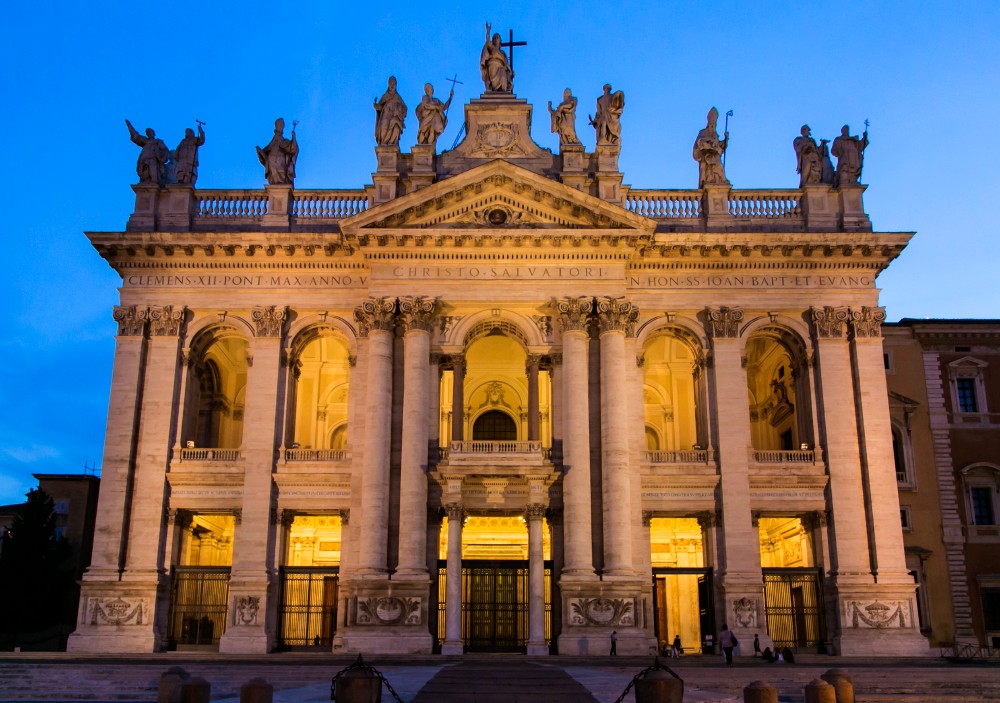The current façade is the work of Alessandro Galilei, who renovated it under Pope Clement XII, in the first half of the eighteenth century. The inscription at the top clearly shows that the basilica is dedicated to “Christo Salvatori”, Christ the Saviour, and indeed immediately above it there is a mosaic with the face of the Lord.
The Symbol of Faith (the “Creed”) of Nicaea – now İznik in Türkiye – which united all Christians in the confession of the one faith in the year 325, must have immediately rung out in the basilica. However, immediately on the left, there are also the names of Saint John the Baptist, to whom the Basilica was soon dedicated on account of the Baptistery that had generated so many Romans to the faith, and then Saint John the Evangelist, who was added when the future Pope Hilarius, in the mid fifth century, believed he had been protected in Ephesus by the very evangelist who was buried there.
The Basilica of Saint John Lateran is known as the “omnium Urbis et Orbis ecclesiarum Mater et Caput”, “mother and head of all the churches of the City and the World”, as we read in the inscription at both sides of the central entrance. In reality, it is the “apostolic” church that is “mother”, since everyone receives the faith from the one Church that arose from the twelve Apostles of the Lord. Just as we receive life, from generation to generation, not only from our parents, but indirectly from all the families who succeeded one another throughout the centuries from the first human couple until them, so we receive faith from those who gave us Baptism, who in turn received it from the first disciples of the Lord. We are all offspring of the “mother church”.
The Church of Rome, of which Saint John Lateran is the cathedral, can however be said to be the mother of all, since anyone in communion with her is sure to have received the faith from the mother church of all, owing to the particular role of the Bishop of Rome, who guarantees adhesion to that one faith.
The other entrance portico is known as the “Sistine”, as it was rebuilt by Pope Sixtus V, who also had the Lateran obelisk erected in front of it. The most ancient monument in Rome, it was sculpted by the Pharaoh Thutmose III (fifteenth century B.C.), and then transferred to Rome by the pagan emperors. This façade welcomes all the pilgrims who arrive at the basilica from Saint Peter’s or from the city centre. The very existence of the two basilicas so far from each other – Saint John Lateran, where the popes resided until their exile in Avignon, and Saint Peter’s – with the consequent processions that have wound their way from one to the other throughout the centuries – have preserved Rome's urban dimensions to this day.




